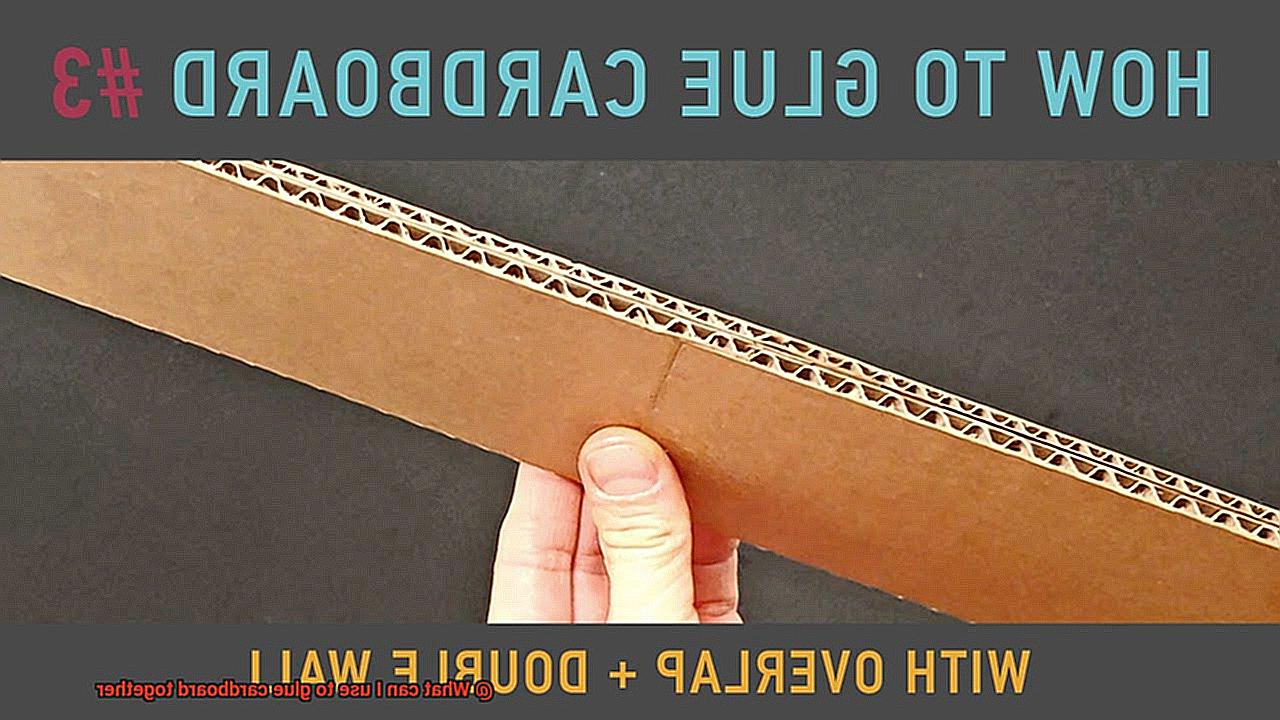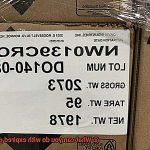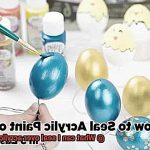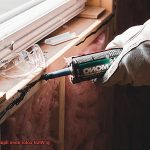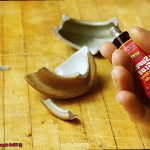Looking for the best way to stick your cardboard creations together? Well, you’re in luck.
When it comes to gluing cardboard, there are plenty of options that can get the job done right. From arts and crafts projects to intricate models, there’s an adhesive out there for every cardboard masterpiece.
In this blog post, we’ll take a closer look at some popular adhesives and explore their unique benefits. Whether you need something that dries in a flash or a glue that forms an unbreakable bond, we’ve got you covered.
So let’s dive in and find the perfect adhesive for all your cardboard adventures.
What is Cardboard and What Are Its Uses?
Contents
Cardboard is a versatile and widely used material that is composed of a thick, sturdy paper. It is primarily made from recycled paper products, such as old newspapers, magazines, and cardboard boxes. The process of manufacturing cardboard involves compressing these paper materials together under high pressure to create a dense and rigid sheet.
Cardboard is known for its strength and durability, making it suitable for numerous applications. One of its most common uses is in packaging. Cardboard boxes are widely used for shipping and storing various goods due to their ability to protect the contents inside. They provide a sturdy and reliable structure that can withstand the rigors of transportation.
In addition to packaging, cardboard is also utilized in the construction industry. It is often used as temporary protection during renovations or construction projects. Cardboard sheets can be easily cut and shaped to fit different areas, providing a cost-effective solution for protecting floors, walls, and surfaces from damage.
Furthermore, cardboard is frequently employed in arts, crafts, and DIY projects. Its versatility allows it to be transformed into various shapes and sizes, making it an ideal material for creating prototypes or models. Many artists utilize cardboard as a medium for sculptures or installations due to its affordability and malleability.
Another notable use of cardboard is in the furniture industry. Over the years, designers have explored the potential of cardboard as a sustainable alternative to traditional furniture materials. Cardboard furniture offers a lightweight and eco-friendly option that can be easily assembled and disassembled. Although it may not possess the same longevity as other materials, it provides a temporary solution or serves as an affordable option for those on a budget.
Moreover, cardboard has found its place in educational settings. It is commonly used in schools for projects that require structural support or visual aids. Students often utilize cardboard to create displays, posters, or presentations due to its accessibility and ease of use.
In recent years, there has been a growing interest in utilizing cardboard for eco-friendly initiatives. Many businesses and individuals are exploring the possibilities of using recycled cardboard to create sustainable products. From eco-friendly packaging to biodegradable disposable items, cardboard offers a renewable and environmentally conscious solution.
Adhesive Options for Gluing Cardboard
When it comes to gluing cardboard together, there is a wide range of adhesive options available, each with its own advantages and suitability for different applications. Let’s explore these options in more detail:
- White glue or craft glue: This is the go-to adhesive for cardboard projects. It is easy to use, dries clear, and provides a strong bond when applied correctly. Whether you’re creating paper crafts or assembling small cardboard structures, white glue is a reliable choice.
- Hot glue: If you need a fast-drying adhesive that bonds quickly and securely, hot glue is your best bet. Hot glue guns are readily available and user-friendly, making them a popular choice for gluing cardboard. Just remember to exercise caution while using hot glue to prevent burns.
- Liquid nails or construction adhesive: For heavy-duty applications or projects that require extra strength, liquid nails or construction adhesive is the way to go. These adhesives are designed to provide a robust and durable bond on various materials, including cardboard. However, keep in mind that they may take longer to dry and require clamping or holding the pieces together until the adhesive sets.
- Double-sided tape: If you’re looking for convenience and ease of use, double-sided tape is a great option. It offers a quick and hassle-free way to attach pieces of cardboard. However, it may not be as strong as other adhesives and may not be suitable for long-term or heavy-duty applications.
- Specialty adhesives: Some individuals prefer specialty adhesives like spray adhesives or epoxy glues for gluing cardboard. These adhesives offer specific benefits such as fast drying time or waterproof properties. However, they tend to be more expensive than other options and require careful application to avoid overspray or excessive bonding.
White Craft Glue
White craft glue, also known as PVA glue (polyvinyl acetate), is a versatile adhesive that is commonly used for bonding cardboard together. It is a water-based adhesive that dries clear and forms a strong bond when applied to cardboard surfaces. What makes white craft glue so popular is its accessibility, versatility, and ease of use.
When using white craft glue for bonding cardboard, there are a few steps to follow to ensure an effective bond. First, it is important to prepare the surfaces by ensuring that both sides of the cardboard are clean and free from any dust or debris. This can be done by wiping them down with a damp cloth if necessary.
Next, squeeze a thin layer of white craft glue onto one of the cardboard surfaces. To evenly distribute the glue, you can use a brush or even your finger. It is important not to apply too much glue as it may result in messy and uneven bonding.
Once the glue is applied, carefully align the second piece of cardboard with the first one. Press them together firmly, ensuring that the glued surfaces are in contact with each other. This will help create a strong and long-lasting bond.
After pressing the pieces together, it is crucial to let them dry for at least 24 hours. This allows the glue to fully cure and ensures maximum adhesion. It is important to be patient during this drying period and avoid moving or manipulating the glued pieces before they are completely dry.
While white craft glue provides a strong bond for most cardboard applications, it may not be suitable for heavy-duty or outdoor projects. The adhesive can be sensitive to moisture and humidity, which can weaken its bond over time. For such projects, it is recommended to use specialized adhesives like epoxy or construction adhesive for better results.
Hot Glue
Hot glue is a versatile and convenient adhesive option for bonding cardboard together. This thermoplastic adhesive becomes liquid when heated and solidifies as it cools, making it an excellent choice for DIY enthusiasts and crafters. There are several advantages to using hot glue for cardboard bonding.
Firstly, hot glue offers a quick drying time. Once applied, the hot glue sets within seconds, allowing for immediate handling of the glued pieces. This is especially beneficial for time-sensitive projects or when you need to assemble multiple pieces quickly.
Secondly, hot glue provides strong adhesion on cardboard surfaces. When properly applied, it creates a durable bond that can withstand moderate stress and strain. It provides a reliable hold for most cardboard projects.
Another advantage of hot glue is its versatility. Hot glue sticks can be used with different types of hot glue guns, which come in various sizes and wattages. This versatility allows you to choose the right gun and stick for your specific needs.
Using hot glue is also an easy process. Simply preheat the glue gun, insert a hot glue stick, apply the glue to one surface, press the second piece firmly, and hold until the glue sets. It’s a hassle-free way to bond cardboard.
However, there are some limitations to consider when using hot glue on cardboard. It may not be suitable for load-bearing structures or projects that require long-term durability. Hot glue can soften and lose its adhesive properties when exposed to high temperatures or direct sunlight, so it may not be appropriate for projects in these conditions. Additionally, hot glue may not adhere well to certain types of coated or glossy cardboard surfaces, so it’s always a good idea to test a small area before applying hot glue to the entire surface.
Epoxy
Epoxy, a versatile and strong adhesive, is an excellent choice for gluing cardboard together. Its high bonding strength ensures a durable and long-lasting bond, providing the necessary support for heavier or larger cardboard structures. This adhesive also possesses the unique ability to fill gaps, making it ideal for repairing damaged or torn cardboard. By reinforcing weakened areas and restoring structural integrity, epoxy creates a smooth surface that can be sanded and painted over for a seamless finish.
To ensure optimal results, it is crucial to carefully follow the manufacturer’s instructions when using epoxy. The resin and hardener must be mixed in the correct ratio and applied evenly to the surfaces being bonded. Applying pressure or using clamps during the curing process can further enhance the strength of the bond.
Despite its many advantages, epoxy may not be suitable for all projects. If you require a fast-drying adhesive or need to join thin or lightweight pieces of cardboard, consider exploring alternative options. Furthermore, it is worth noting that epoxy can be more expensive compared to other glues available on the market.
Spray Adhesive
Spray adhesive is a game-changer when it comes to gluing together pieces of cardboard. Its advantages make it the go-to choice for crafters, DIY enthusiasts, and professionals.
First and foremost, spray adhesive is incredibly easy to use. No need for messy brushes or spreading glue manually. Just shake the can, hold it about 8-12 inches away from the cardboard, and spray a light, even coat. It’s as simple as that.
But what sets spray adhesive apart from other adhesives is its quick drying time. Unlike glues that take hours or even days to fully cure, spray adhesive dries in just a few minutes to an hour. Say goodbye to waiting around for the glue to dry and hello to moving forward with your project.
Not only is spray adhesive easy to use and quick-drying, but it also ensures an even application. This is especially beneficial when working with large or irregularly shaped pieces of cardboard. Spray adhesive guarantees that the adhesive covers every nook and cranny, creating a uniform bond over the entire surface.
And let’s not forget about the strength and durability of spray adhesives. They provide a strong bond that can withstand moisture and humidity. So whether you’re creating outdoor signs or displays that may be exposed to these conditions, you can trust that your project will hold up.
Spray adhesives are also versatile. They can bond various materials, not just cardboard. So whether you’re working on arts and crafts or home repairs, spray adhesive has got you covered.
Remember to work in a well-ventilated area when using spray adhesive, as some types may emit strong fumes. Safety first. And always read and follow the manufacturer’s instructions for best results and safety precautions.

Double-Sided Tape
Double-sided tape is a versatile adhesive option that revolutionizes the way we glue cardboard together. It consists of a thin strip of adhesive coated on both sides with a removable liner, creating a powerful bonding tool. This remarkable tape is commonly used for mounting purposes, eliminating the need for traditional glue and its messy aftermath.
One of the main advantages of double-sided tape is its ease of use. Unlike laborious liquid glue or other adhesive options, this tape requires no mixing or drying time. With just a simple application to the cardboard surface and a firm press, an instant bond is formed.
Moreover, double-sided tape offers a clean and neat application, sparing us from the dreaded excess glue seepage. The evenly distributed adhesive on both sides ensures precision and neatness in our crafting or packaging projects. No more smudging or uneven application to mar our creations.
However, to unleash the true potential of double-sided tape, proper surface preparation is crucial. A clean and debris-free cardboard surface is essential for maximizing the effectiveness of the adhesive and securing a strong bond. A quick wipe with a clean cloth or a gentle cleanse with mild detergent will do the trick.
It is important to note that not all double-sided tapes are created equal. Some are designed specifically for heavy-duty applications, providing an extra level of adhesive strength. When selecting the perfect tape for gluing cardboard, it is advisable to choose one labeled as suitable for this purpose with optimal adhesive strength.
Contact Cement
In the realm of gluing cardboard together, one adhesive stands head and shoulders above the rest – contact cement. This versatile and mighty adhesive is revered for its robust and enduring bond, lightning-fast drying time, and resistance to heat, moisture, and chemicals. In this comprehensive guide, we will unravel the advantages and considerations of using contact cement for all your cardboard gluing needs.
Advantages of Using Contact Cement:
- Unyielding Bond: Contact cement weaves a formidable and permanent bond between cardboard surfaces. It ensures that your glued creations stay steadfastly united for an extended period, withstanding the test of time.
- Ultimate Convenience: Say goodbye to clamping and other laborious means of pressure. Contact cement eliminates the need for these cumbersome techniques. It effortlessly adheres to surfaces, making it a breeze to use, especially for larger-scale cardboard projects.
- Boundless Versatility: From crafting boxes to constructing models or mending damaged cardboard items, contact cement is your trusty companion. Its adaptability makes it an indispensable solution for all your packaging and crafting aspirations.
Considerations when Using Contact Cement:
- The Art of Application: Following the manufacturer’s instructions is crucial when applying contact cement. Typically, you’ll brush or roll on the adhesive onto both surfaces being bonded. After allowing the adhesive to dry for a specified duration, press the surfaces together firmly to create a flawless bond.
- Ventilation and Flammability Precautions: Keep in mind that contact cement can be flammable. To avoid any untoward incidents, always work in a well-ventilated area, far away from open flames or sparks. Prioritize your safety by taking necessary precautions and creating a secure working environment.
- Compatibility Check: Though contact cement guarantees an unparalleled bond for gluing cardboard together, it may not be suitable for all cardboard materials. To avoid any mishaps, it’s advisable to test the adhesive on a small, inconspicuous part of the cardboard before committing to the entire surface.
P–8TLM_SxE” >
Conclusion
In conclusion, the world of cardboard bonding offers a plethora of adhesive options, each with its own unique advantages and suitability for different applications.
For those seeking simplicity and reliability, look no further than white glue or craft glue. This popular choice is a breeze to use, drying clear and providing a robust bond. Whether you’re working on paper crafts or assembling petite cardboard structures, this adhesive has got you covered.
If speed and security are your top priorities, hot glue is the way to go. With lightning-fast drying time and a trustworthy hold, it’s perfect for most cardboard projects. Just keep in mind that it may not be suitable for load-bearing structures or projects exposed to scorching temperatures or relentless sunlight.
When heavy-duty strength is non-negotiable, liquid nails or construction adhesive steps up to the plate. These powerhouses excel in demanding applications and offer an ironclad bond on various materials, including cardboard. However, patience is key as they might require additional drying time and necessitate clamping or holding until the adhesive sets.
For those who crave convenience without sacrificing effectiveness, double-sided tape is here to save the day. Its hassle-free application makes attaching pieces of cardboard a breeze. Just bear in mind that it may not possess the same level of strength as other adhesives and might not be ideal for long-term or heavy-duty endeavors.
Should your project demand specialized properties like rapid drying time or waterproof capabilities, specialty adhesives such as spray adhesives or epoxy glues have got your back. While they may come with a heftier price tag compared to other options, their exceptional results when used correctly make them worth every penny.
Ultimately, selecting the best adhesive for your cardboard bonding needs comes down to considering factors such as drying time, required strength, and environmental conditions.

